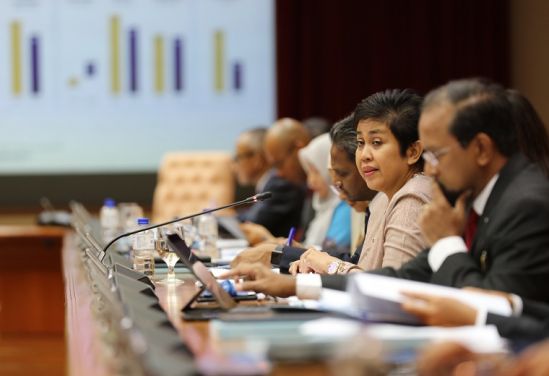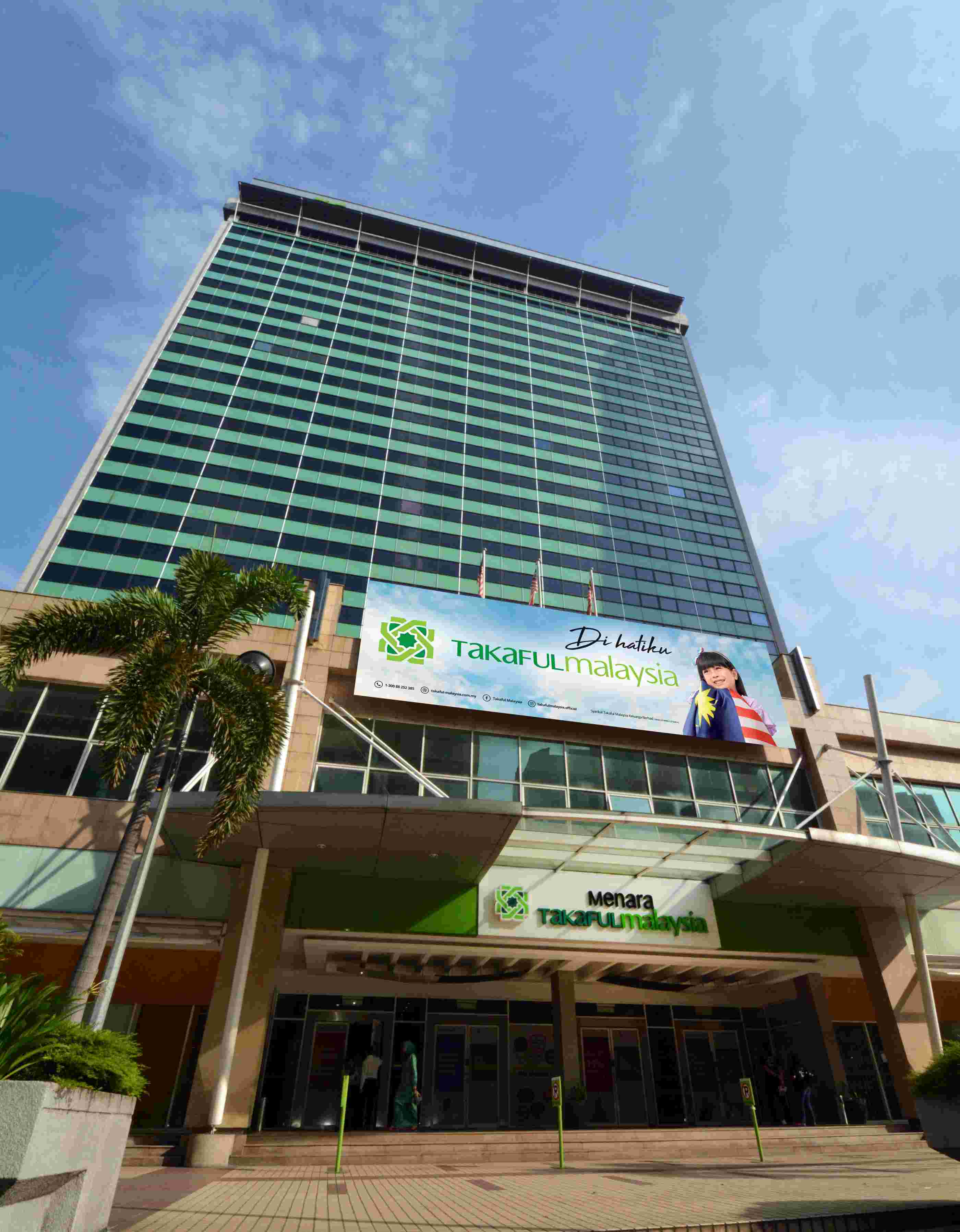As the year progressed, however, the global economy was confronted with multiple headwinds such as the escalation of trade conflicts, renewed volatility in commodity prices, and bouts of volatility in global financial markets.
As a result, most major advanced and regional economies experienced a more moderate expansion during the year. In the advanced economies, improving labour market conditions lifted consumption activity.
In Asian economies, GDP growth was predicated on continued resilience in domestic demand amid waning support from external demand. Global headline inflation in 2018 was higher, driven mainly by supply-related factors.
Core inflation rates remained modest across both advanced and emerging market economies, reflecting moderating demand pressures. Overall global financial conditions tightened in 2018, reflecting the normalisation of global monetary policy and heightened financial market volatility due to ongoing policy and economic uncertainties.
Monetary policies in most advanced economies, particularly the US, remained on their normalisation paths. Emerging market economies also experienced tighter financial conditions as the monetary policy normalisation in advanced economies led to large portfolio outflows from emerging market financial assets.
At the same time, ongoing risk-off developments such as the global trade tensions further contributed to sudden shifts in investor sentiments and episodes of financial market volatility.
As funds shifted away from emerging market economies, pockets of vulnerabilities also emerged in some of these economies, which culminated in the currency sell-offs in Argentina and Turkey.
A number of central banks in emerging market economies also tightened monetary policy due to concerns on higher inflation arising from the depreciation of their currencies and the earlier increases in commodity prices.
As a result of these developments, financial market performances in advanced economies, particularly the US, and emerging market economies diverged during the year.
Despite the challenging global economic and financial environment, the Malaysian economy demonstrated resilience and recorded a respectable growth of 4.7% in 2018.
The Annual Report provides an analysis of the development in the Malaysian economy and outlines the future challenges.
The report also highlights the Bank’s continuous efforts to strengthen its governance and organisational development.
The Malaysian Economy in 2018 The Malaysian economy expanded at a more moderate pace of 4.7% in 2018 (2017: 5.9%).
Despite a positive start to 2018, the economy subsequently was confronted with several external and domestic challenges.
Major policy and political shifts, arising partly from the global trade tensions and the historic change of government in Malaysia, became sources of uncertainty for the economy.
Unanticipated supply disruptions in the mining and agriculture sectors, as well as commodity exports adversely affected Malaysia’s economic performance, resulting in a larger-than-expected moderation in growth.
Domestic demand continued to anchor growth, supported mainly by private sector expenditure. Private consumption growth, in particular, recorded the fastest rate since 2012 at 8.1% (2017: 7.0%).
Favourable wage and employment growth continued to drive household spending with additional support from the three-month tax holiday (1 June – 31 August) following the zerorisation of the Goods and Services Tax (GST) rate, as well as other Government measures such as the fixing of the retail fuel price of RON95 petrol and special payments to civil servants and pensioners.
In line with the Government’s commitment to reprioritise expenditures, public consumption growth moderated to 3.3% (2017: 5.4%).
Gross fixed capital formation (GFCF) expanded at a slower pace of 1.4% (2017: 6.2%) due to a contraction in public investment and the slower expansion in private investment.
Public investment declined by 5.2% (2017: 0.1%) following lower spending by public corporations.
Private investment grew at a slower pace of 4.5% (2017: 9.3%) amid heightened uncertainty stemming from both external and domestic developments.
However, firms, particularly in the exportoriented sectors, continued to increase production capacity and improve efficiency to meet demand. On the supply side, most economic sectors recorded an expansion, with the exception of commodity-related sectors.
The services sector’s growth improved to 6.8% (2017: 6.2%), the highest since 2011, as better consumer sentiments and favourable labour market conditions spurred spending, in particular during the tax holiday period.
The manufacturing sector expanded by 5.0% (2017: 6.0%) supported primarily by a continued expansion in the electrical and electronics (E&E) cluster.
The construction sector recorded a moderate growth of 4.2% (2017: 6.7%) due to weaknesses in the property segment.
Growth in the mining sector, however, contracted by 1.5% (2017: 1.0%) due to the decline in natural gas production, while adverse weather and production constraints that affected palm oil and rubber production led to a decline in growth in the agriculture sector (2018: -0.4%, 2017: 7.2%).
In the labour market, employment growth was strong at 2.5% (2017: 2.0%), amounting to an additional employment gain of 360,250 persons.
Meanwhile, the labour force grew by 2.5% (2017: 1.9%), which amounted to 372,875 persons entering the labour force. The labour force participation rate also rose to 68.4% (2017: 68.0%).
As a result, the unemployment rate remained unchanged at 3.4%. Net employment gains were driven mainly by high- and mid-skilled workers, which grew by 1.6% and 4.2% respectively.
Reported retrenchments continued on its decreasing trend (23,168 persons; 2017: 35,097 persons), below the long-run average of 29,628 persons per annum.
Aggregate nominal wages in the private and public sectors grew by 6.0% and 4.5% respectively (2017: 6.4% and 6.2%, respectively). In 2018, headline inflation declined to 1.0% (2017: 3.7%).
The moderation mainly reflected the impact of the fixing of retail fuel prices and the zerorisation of the GST rate.
These factors more than offset upward cost pressures that remained present for some parts of 2018. Core inflation averaged lower at 1.6% (2017: 2.3%) amid smaller cost pass-through to retail prices and the absence of excessive demand pressures.
Malaysia’s external position remained resilient amid an increasingly challenging global economic environment.
The current account of the balance of payments continued to register a healthy surplus of 2.4% of GNI (2017: 3.1% of GNI), contributed by a higher goods surplus and a smaller services deficit, which more than offset the deficit in the income accounts.
Gross exports registered a more moderate growth of 6.8% in 2018 (2017: 18.8%) driven by manufactured exports which helped to partially offset the decline in commodity exports.
Gross imports growth also moderated to 4.9% (2017: 19.7%), on account of weaker intermediate and capital imports. During the year, movements in short-term flows dominated capital flow developments as the financial account of the balance of payments recorded a net inflow of RM18.6 billion (2017: net outflow of RM4.7 billion).
A reversal of portfolio investments by non-residents, which took place amid increasingly more volatile global financial market conditions, were offset by substantial inflows in the other investment account.
Meanwhile, long-term foreign direct investment (FDI) flows resumed at a more moderate pace, while domestic firms and institutional investors continued to undertake direct investments abroad (DIA).
The international reserves of Bank Negara Malaysia amounted to USD101.4 billion as at end-2018 compared to USD102.4 billion as at end-2017.
As at 28 February 2019, international reserves amounted to USD102.4 billion and remain adequate to facilitate international transactions.
The reserves position is sufficient to finance 7.4 months of retained imports and is 1.0 time the shortterm external debt. Malaysia’s external debt stood at RM924.9 billion as at end-2018, equivalent to USD221.0 billion or 64.7% of GDP (end-2017: RM885.2 billion, equivalent to USD215.9 billion or 65.4% of GDP).
The higher external debt was driven mainly by the increase in interbank borrowings and corporate loans to finance investment activity as well as valuation effects following the weakening of ringgit against selected regional and major currencies, in particular, during the second and third quarters of the year.
Malaysia’s external debt exposure remained manageable. Favourable external balance sheet profiles across instruments, maturity and currency were reinforced by external asset holdings of the domestic banks and corporates, further mitigating potential risks.
Overall, the strong fundamentals and highly diversified structure of the Malaysian economy have accorded Malaysia the ability to weather the headwinds and challenges.
Policies were flexible and pre-emptive to ensure risks were minimised. Malaysia’s external position remained healthy, with a current account surplus, adequate international reserves and manageable external debt exposure.
These strengths in the external position, along with a flexible exchange rate and a well-developed financial system, effectively mitigated the impact of volatile shifts in capital flows on domestic financial markets.
Appropriate foreign exchange intervention and the implementation of financial market measures during this period of volatility also underscored the importance of pragmatic, timely policy responses in managing risks and supporting growth.
Economic and Monetary Management in 2018 The Monetary Policy Committee (MPC) normalised the degree of monetary accommodation at the January 2018 MPC meeting and raised the Overnight Policy Rate (OPR) by 25 basis points to 3.25%.
In the MPC’s assessment, the economic conditions that had called for the previous OPR reduction in July 2016 had vastly improved.
The OPR adjustment, however, did not constitute a tightening of monetary conditions, as the overall stance of monetary policy remained supportive of economic growth.
The normalisation of the degree of monetary accommodation contributed towards preserving the sustainability of growth, while ensuring ample policy space in the event of shocks to the economy in the future.
The MPC also recognised the need to prevent the build-up of risks that could arise from interest rates being too low for a prolonged period of time even as the risks of financial imbalances remained contained.
By mid-year, however, the prospects to both the global and domestic growth outlook shifted. Even though global economic expansion continued, there was increasing divergence across economies and signs of moderating global growth momentum.
Domestically, unanticipated commodity supply-side shocks and lower public sector spending led to slower GDP growth.
However, better private consumption growth following increased household spending due to the zerorisation of the GST rate supported domestic growth during the period.
On balance, the Malaysian economy was expected to remain on a steady growth path.
Throughout 2018, underlying inflation was expected to moderate following expectations of smaller pass-through from external and domestic cost factors, and the absence of excessive demand pressures.
Subsequent to the OPR increase in January, the OPR was maintained at the prevailing level for the remainder of the year.
The degree of monetary accommodativeness was assessed to be consistent with the intended policy stance of ensuring that the domestic economy continued on a steady growth path with price stability.
Throughout the year, domestic financial markets experienced shifts in non-resident portfolio flows, largely reflecting changes in investor sentiments and risk appetite.
In the first quarter, global financial markets continued their strong momentum from 2017 and investor sentiments remained buoyed by the positive economic outlook in emerging market economies.
As a result, the demand for ringgit investment assets provided support to the ringgit exchange rate, as well as domestic bond and equity prices.
However, this trend reversed from the second quarter onwards as global and domestic policy uncertainties weighed down on investor sentiments.
For the year as a whole, the ringgit depreciated by 1.8% to end the year at RM4.1385 against the US dollar and remained as one of the better performing currencies in the region. The benchmark Malaysian
Government Securities (MGS) yield curve shifted upwards, reflecting an increase in bond yields across all maturities. The domestic financial markets performed relatively well and continued to intermediate shifts in capital flows in a stable and orderly manner.
This was partly attributed to policies introduced by the Bank and the Financial Markets Committee (FMC) at end-2016. Foreign exchange liquidity improved following the introduction of the export conversion measure.
In addition, the reinforcement of the non-facilitation of non-deliverable forward (NDF) transactions limited the spill-overs from speculative activities in opaque offshore markets.
The magnitude of adjustments in the domestic capital markets also remained contained during the year due to sustained demand from domestic institutional investors, which partially offset the impact from these outflows.
During the year, domestic monetary and financial conditions, and continued healthy growth in financing to the private sector were supportive of economic activity.
The Bank’s monetary operations ensured sufficient liquidity to support the orderly functioning of money and foreign exchange markets.
The contractionary impact on liquidity arising from large capital outflows was offset by the Bank’s liquidity injection operations undertaken through the reverse repo and foreign exchange swap facilities.
As a result, price discovery in the domestic money market remained uninterrupted and money market rates remained stable during the year.
Overall banking system liquidity remained sufficient to support the financial intermediation process. Net financing to the private sector recorded an annual growth of 5.6% as at end-2018 (2017: 6.3%).
Higher growth in outstanding loans of 4.8% was mainly driven by the business segment.
Outlook for the Malaysian Economy in 2019
In 2019, the global economy is projected to expand moderately, following slower growth in both advanced and major emerging market economies.
In the advanced economies, economic activity is projected to moderate. While labour market strength will continue to support domestic demand, moderating investments and external demand will affect overall growth.
In PR China, ongoing structural reforms to rebalance the economy are leading to slower, but more sustainable growth. In other Asian economies, growth will likely moderate despite stable domestic demand, as exports react to the slowdown in the advanced economies and PR China.
Global trade developments will remain a key factor affecting the 2019 outlook. Prolonged policy uncertainty could adversely affect investment decisions and thus, longer-term productivity growth.
Elevated investor uncertainty and bouts of volatility in the financial markets will pose further risks of greater volatility in capital flows to emerging market economies.
Overall, the balance of risks to the global growth outlook is tilted to the downside. Against the backdrop of a challenging global environment, the Malaysian economy is expected to sustain its growth momentum, expanding by 4.3% – 4.8% in 2019 (2018: 4.7%).
Domestic demand will remain the anchor of growth, underpinned by continued expansion in private sector activity. Private consumption growth is expected to moderate but remain firm supported by stable labour market conditions and continued wage growth.
The implementation of several government measures, particularly aimed at alleviating rising cost of living, is expected to further support consumption spending, especially by lower income households.
Private investment activity will be supported by the implementation of on-going multi-year projects, particularly in the manufacturing and services sectors.
The normalisation of destocking activities by firms after the strong demand during the tax holiday period in 2018 will serve as an additional support to growth.
Public sector expenditure, however, is expected to weigh on growth.
The projected contraction in public investment will be due mainly to lower investment by public corporations following the completion of large-scale projects, while the expectations for a moderate growth in public consumption reflect the continued reprioritisation of government spending.
The external sector is expected to register a more moderate growth. While the export sector will soften in line with the more moderate expansion in global growth and trade activity, Malaysia’s well-diversified export structure will contribute to sustain gross exports expansion.
Gross imports are also expected to expand on account of a turnaround in intermediate and capital imports.
Overall, the current account of the balance of payments is projected to remain in surplus, albeit narrowing to 1.5% – 2.5% of GNI. On the supply side, all economic sectors are expected to expand with the services and manufacturing sectors remaining the key contributors to overall growth.
Both the mining and agriculture sectors are projected to record positive growth rates amid recovery in natural gas production and higher palm oil output.
Growth in the construction sector is expected to moderate due to the completion of large petrochemical projects in the civil engineering subsector.
Labour market conditions are expected to be stable, with continued employment and income growth, underpinned by steady expansion in services and manufacturing sectors.
The unemployment rate is projected to be relatively unchanged. In the long run, the rollout of government policies such as the tiered levy and social security contribution for foreign workers is a positive step in reducing the reliance on foreign labour and spurring the creation of higher skilled, higher income jobs in the economy.
Headline inflation is expected to be broadly stable, with a projected annual average of 0.7% – 1.7% in 2019.
The inflation projection incorporates some cost pass-through from domestic cost factors, but the upward impact will be offset by the expected lower global oil prices and the implementation of price ceilings on domestic retail fuel prices.
Underlying inflation, as measured by core inflation, is expected to be sustained amid the steady expansion in economic activity and in the absence of excessive demand pressure.
Overall, the domestic growth projection is subject to several downside risks. As a small open economy, the unresolved trade tensions between the US and PR China, and a slower-than-expected global growth will affect Malaysia primarily via the trade and investment channel.
The uncertain pace of the monetary policy normalisation in the US could heighten financial market volatility across emerging market economies, leading to volatile two-way capital flows and currency fluctuations.
Volatility in global oil prices would also affect export performance and mining sector investment. On the domestic front, a re-occurrence of commodity supply disruptions, partly from unanticipated weather patterns, could affect the recovery in the mining and agriculture sectors.
In addition, the oversupply situation in the property market could dampen activity in the construction sector. Malaysia’s strong fundamentals and the diversified nature of the economy will help to weather these risks and vulnerabilities while preserving macroeconomic and financial stability.
These strong fundamentals include a healthy labour market, stable inflation rate, continued surplus in the current account of the balance of payments, deep financial markets as well as a strong financial sector.
Exchange rate flexibility and sufficient level of international reserves further enhance the economy’s capability to withstand external shocks.
Moreover, commitment by the Government to fiscal, structural and institutional reforms will contribute to inclusive and sustainable growth going forward.
Economic and Monetary Management in 2019
Monetary policy in 2019 will focus on supporting the steady growth of the Malaysian economy amid an environment of relatively low inflation.
At the same time, monetary policy will also consider the prevailing monetary and financial conditions.
While risks of financial imbalances are expected to remain contained, the MPC is cognisant of challenges emanating from potential continued volatility in global capital flows.
In this regard, the Bank will continue to ensure sufficient liquidity and orderly market conditions that remain supportive of financial intermediation activity.
The broad range of policy options available that includes monetary policy, micro- and macroprudential measures provide the Bank with flexibility to manage emerging risks.
Measures to further deepen the domestic financial markets will also contribute to orderly market conditions. The combined effect of these policies will ensure that the Bank’s policy efficacy is maintained without overburdening any single policy tool.
Fiscal policy in 2019 aims to strengthen the Government’s fiscal position by pursuing gradual fiscal consolidation while lending continued support for growth, paring down debt and liabilities, as well as promoting economic inclusiveness.
Correspondingly, the medium-term fiscal plan outlined the path towards consolidation with fiscal balances targeted at -3.4% and -3.0% of GDP in 2019 and 2020 respectively.
The path towards fiscal consolidation is anchored in several key reform initiatives which include enhancing expenditure effectiveness, diversify and broaden the revenue base and encourage holistic and transparent debt management.
The 2019 Budget also accorded emphasis to improving socio-economic wellbeing, strengthening social protection programmes, improving employability and initiatives to raise productivity, particularly for the Small and Medium Enterprises (SMEs).
Going forward, the Government has indicated its commitment towards ensuring fiscal sustainability and a stronger governance framework through the implementation of holistic fiscal reforms.
Bank Negara Malaysia’s Audited Financial Statements for 2018
As audited and certified by the Auditor General, the financial position of Bank Negara Malaysia remained strong in 2018. Bank Negara Malaysia’s total assets amounted to RM447.6 billion, with a net profit of RM7.5 billion for the financial year ending 31 December 2018. Bank Negara Malaysia declared a dividend of RM2.5 billion to the Government for the year 2018.













